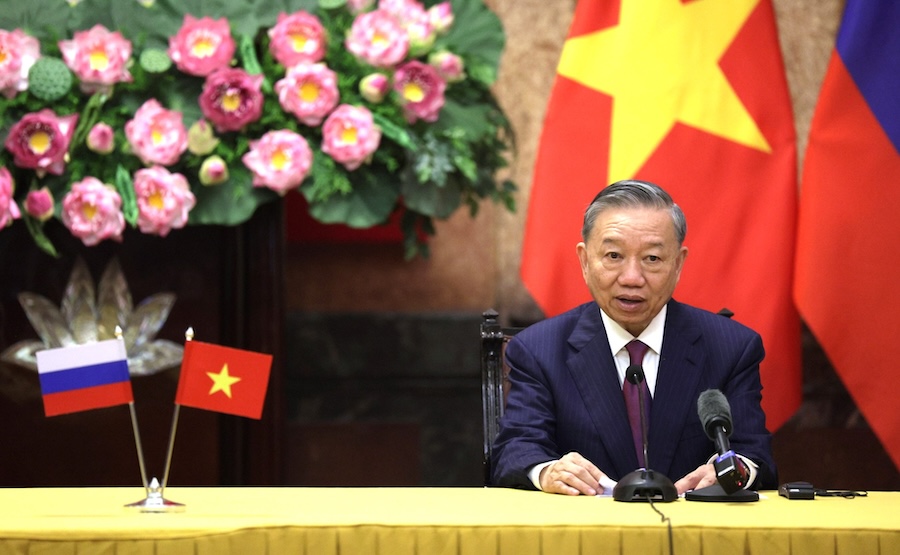Politics
NEW: Vietnam Vows To Cut Tariffs To Zero After Trump’s ‘Liberation Day’ Rollout
In a potential breakthrough for American manufacturers and consumers, Vietnam is now offering to cut its tariffs to zero—just hours after President Donald Trump announced sweeping tariff hikes on imports, including a stiff 46% levy on Vietnamese goods.
The announcement follows what Trump described as a “very productive call” with To Lam, the General Secretary of the Communist Party of Vietnam. In a post on Truth Social, Trump said Lam “told me that Vietnam wants to cut their Tariffs down to ZERO if they are able to make an agreement with the U.S.”
Trump added, “I thanked him on behalf of our Country, and said I look forward to a meeting in the near future.” The development marked a rapid shift in tone from Hanoi after Trump’s early April “Liberation Day” economic rollout stunned global markets with its aggressive protectionist measures.
The tariffs hit Vietnamese exports especially hard—posing a major challenge for American companies like Nike, which has come to rely heavily on Vietnam for manufacturing. Nike’s stock initially plunged 14% to $55.58—the lowest point since 2017—following Trump’s tariff announcement.

via Truth Social
In fiscal year 2024, Nike produced about 50% of its footwear and 28% of its apparel in Vietnam. So when news broke that Vietnam was open to trade negotiations, markets reacted swiftly—Nike shares jumped over 4% in early trading.
The rebound reflects a pattern under Trump’s trade strategy: using tariffs as leverage. The Trump administration has made clear that tariffs are not just a threat but a cornerstone of its second-term economic policy.
In March, the White House doubled tariffs on Chinese imports from 10% to 20%, prompting swift retaliation from Beijing, which imposed new duties on U.S. soybeans, pork, and cotton. Canada, Mexico, and the European Union have also found themselves on the receiving end of increased trade pressure.

General Secretary of the Communist Party of Vietnam To Lam in Hanoi, 2024
Vietnam, meanwhile, has become one of America’s fastest-growing trade partners, thanks to its booming manufacturing base and rising status as an alternative to China. In 2023, it ranked as the 8th largest supplier of goods to the U.S., with exports topping $120 billion.
Much of that trade centers on four major categories: textiles and apparel, footwear, electronics, and furniture. Apparel alone makes up nearly 20% of Vietnam’s total exports to the U.S., with American giants like Nike, Adidas, and Gap heavily reliant on Vietnamese factories.
Electronics and technology parts—especially phone components, semiconductors, and computers—have seen rapid growth as companies like Samsung pour billions into Vietnamese facilities. Many of Samsung’s devices bound for global markets, including the U.S., are assembled there.
Vietnam’s exports extend beyond mass-market goods to include seafood like shrimp and catfish, coffee, and industrial machinery. The shift of U.S. companies away from China and toward Vietnam over the last five years—driven by tariffs and rising geopolitical risk—has only strengthened the trade bond.
That’s why any sudden changes to U.S.-Vietnam trade policy could have ripple effects across global supply chains, retail prices, and investor sentiment.













